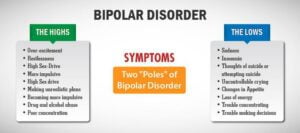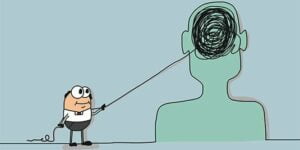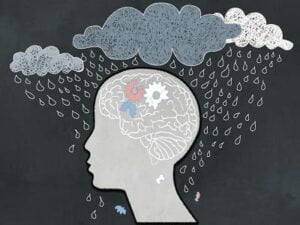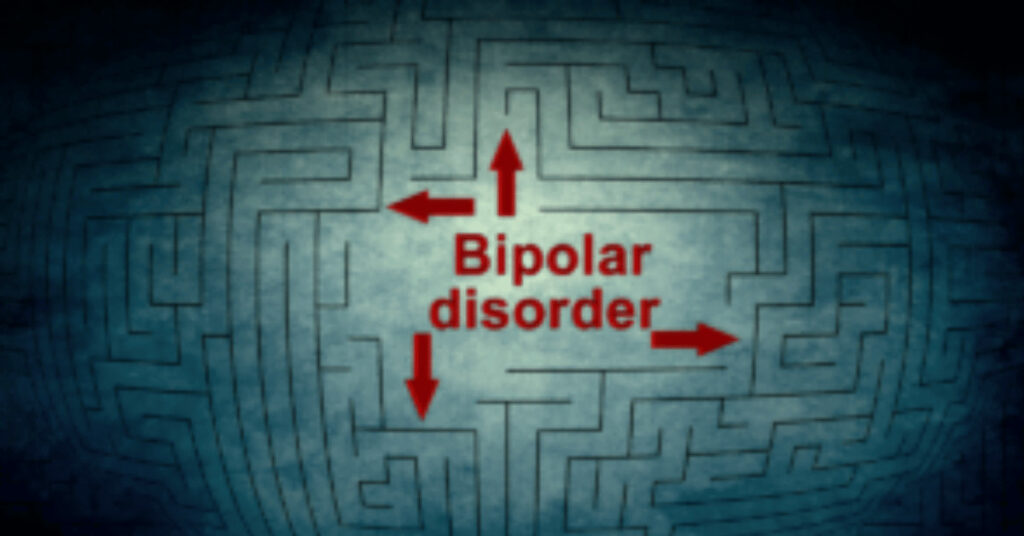Contents
Bipolar Disorder

Bipolar Disorder is a mental illness that affects a significant number of people worldwide. The disorder is characterized by periods of depression and periods of mania or hypomania.
Bipolar Disorder can be hard to diagnose as there are several other mental health conditions that have similar symptoms, such as chronic depression, post-traumatic stress disorder, and borderline personality disorder. The diagnostic criteria include one or more manic episodes or mixed episodes (manic and depressive episodes at the same time).
According to the DSM-IV, a manic episode is a distinct period of at least one week in which there is an abnormally and persistently elevated or irritable mood. In addition, three or more of the following symptoms must also be present:
It is important to know the symptoms of depression. Depression can be the result of many factors, such as trauma, stress, or hormonal changes. It’s also possible to experience depression for no clear reason at all. When left untreated, it can become stronger and more difficult to fight off.
Bipolar Disorder Symptoms
Bipolar disorder, also known as manic depression, is a mental health condition that causes extreme highs (mania) and lows (depression) in mood, energy, and quality of life. For more information on bipolar disorder.
The symptoms of bipolar disorder can vary and not always be the same as other people. For instance, many people may experience psychotic symptoms however some will not. Another symptom is that some people with bipolar disorder find that they’re on a roller-coaster ride of highs and lows. Then others may feel like they’re experiencing waves of depression or mania.
The following is a list of manic symptoms:

- Experiencing delusions
- Having hallucinations
- Making outrageous plans
- Feeling exceptionally powerful, invincible, or full of energy
- Blasting out racing thoughts
- Speaking quickly and jumping from one project to another without finishing anything
- Overdoing it in terms of alcohol, drugs, and caffeine
- Acting impulsively or without regard for what’s appropriate
The following is a list of depressive symptoms:
- Feeling down or like you’ve hit rock bottom
- Having no motivation to do anything
- Experiencing fatigue
- Lacking interest in the things that you once loved
- Having trouble sleeping or sleeping too much Feeling physically slowed down
- Experiencing aches and pains that don’t go away with a visit to the doctor.
Bipolar Disorder’s Effects On A Person’s Behavior
Bipolar disorder is a mental health condition that affects how one thinks, feels, and behaves. This disorder is also known as manic-depressive illness. The person has swung in mood between manic highs and depressive lows.
Bipolar disorder, also known as manic-depressive illness, is a mental health condition marked by dramatic mood swings.
The illness can cause cycles of depression or mania. Manic behavior can include having too much energy, staying up all night, talking too fast, and taking on many projects at once. Bipolar disorder is a mental health diagnosis that results in extreme mood swings. It can cause cycles of depression or mania. The manic behavior can include having too much energy, staying up all night, talking too fast, and taking on many projects at once.
Depression causes the person to feel sad or hopeless for their future. It can lead to suicide attempts or thoughts of death or self-harm. Depression is a mental health issue that causes the person to feel sad or hopeless for their future. It can lead to suicide attempts or thoughts of death or self-harm.
How Does A Person With Bipolar Disorder Think?
The answer to this question may not be straightforward. But one thing is for sure – bipolar disorder is a mood disorder characterized by periods of depression and mania.
Manic Stage

The manic stage of bipolar disorder can last for weeks, months, or even longer periods. During this time the person often has feelings of euphoria or extreme irritability and can exhibit excessive activity or risk-taking behavior with little sleep.
Mood Swings
Mood swings are common during the depressive stages as well as feeling hopeless, down on oneself, and guilty about one’s own shortcomings. These depressive episodes can last for days to months but typically do not go on as long as manic episodes.
In general, those with bipolar disorder experience increased sensitivity to stimuli from their environment – compared to those without a diagnosis of bipolar disorder – which People who have a diagnosis of bipolar disorder are more likely to show a higher level of creativity, which is the ability to produce new and original ideas.
This is not because they’re mentally ill, but because the brain disease might make them more creative in some ways.
Bipolar disorder may be related to creativity in at least two ways. First, it increases the likelihood that bipolar people will have intense mood swings. This means they’ll experience intense highs and lows. During these periods, there’s been research showing that people with bipolar disorder are more creative than usual. Second, a lot of mental illness can reduce a person’s attention span and ability to focus on tasks at hand. This isn’t true for everyone with mental illness. But it can be true for bipolar people – leading them to be less attentive.
Bipolar people are often highly creative. This is because they have increased energy which can lead to more engaged behavior. This engaged behavior can lead to more productivity for individuals with this mental illness.
In a recent study, it has been found that people with mental illnesses are more productive when they are performing an activity. Therefore, this is one of the reasons why they can’t stick to their jobs for too long.
Mental illness is not just about feeling down or sad. It can also cause low levels of productivity because of engagement.
How Does A Person With Bipolar Disorder Communicate?

A person with bipolar disorder is not able to communicate effectively with others because of the mental illness. They are, however, still able to communicate through their facial expressions and body language. It is possible for them to verbally express themselves but they may not do it often due to feelings of inadequacy.
It is essential for people around them to educate themselves about bipolar disorder. So they can understand what kind of support their loved ones need in order to manage the disorder. Education is the key when it comes to providing the necessary support for bipolar patients.
What Are The Thoughts Of Bipolar Patients On Love And Friendships?
The bipolar patients in this study revealed how love and friendships can enhance their mood while others can bring them down. They also talked about the lack of trust they have in relationships and friends. Bipolar patients express how they need to be careful when it comes to decisions because their mood swings can make them do the opposite of what they are want to do.
It is not easy for a bipolar patient to find a partner who matches theirs’ level of mood swings. Another issue that came up was that sometimes people cannot handle a high-mood person because it affects their stability each time.
Common Thought Patterns Of People With Bipolar Disorder

Bipolar disorder is a type of mood disorder that consists of periods of mania and depression. The two extremes are what make bipolar disorder difficult to manage.
People with bipolar disorder experience a range of emotions, including intense highs and lows, which can lead to impulsivity. This impulsivity can lead to problem behaviors such as drug abuse or fighting, as well as suicide attempts.
Impulse control is the ability to resist an urge or temptation and delay gratification. An individual may experience impulsivity when they suffer from a lack of impulse control, which can lead to problem behaviors such as drug abuse or fighting, as well as suicide attempts.
Cyclical Thought Pattern
Individuals with bipolar disorder experience extreme mood swings. They alternate between periods of highs and lows, without necessarily knowing what triggers the change. When they are experiencing a high period, they may feel full of energy and productivity. However, while experiencing a low period, their mood can be irritable and they may have trouble focusing on tasks that usually seem easy.
When people are experiencing a low period, their mood can be irritable and they may have trouble focusing on tasks that usually seem easy. This can lead to procrastination and a lack of motivation which can contribute to worsening the situation.
Depression
 Bipolar disorder is a mental illness involving episodes of elevated mood, also known as mania, and episodes of depression. These episodes can be separated by periods without symptoms (so-called “normal” periods).
Bipolar disorder is a mental illness involving episodes of elevated mood, also known as mania, and episodes of depression. These episodes can be separated by periods without symptoms (so-called “normal” periods).
Two or more periods without symptoms after the first postpartum period is called “normal” periods. However, this doesn’t mean that your body is back to regular.
Your periods will be irregular for a while after your baby is born. The length of time it takes for this to happen varies from woman to woman. Some women have their first postpartum period within the first six weeks, others may not have it for up to two years. Whatever the case, two or more periods without symptoms after the first postpartum period are called “normal” periods.
Mania
Bipolar disorder is a mental disorder that causes people to experience extreme mood swings. These include periods of depression and periods of mania. It is estimated that there are approximately 5.7 million people who have bipolar disorder in the United States. And about 2.6% of the population suffers from this disease.
Thought Of Self-harm
A recent study by Dr. Emilie Ullerup at the University of Cincinnati found that thoughts of self-harm in bipolar disorder patients increase as dopamine production declines. The findings suggest that those who suffer from less dopamine production are more likely to have suicidal thoughts and those who suffer from more dopamine production are less likely to have such thoughts.
How To Support Someone With Bipolar Disorder?
Bipolar disorder is a mental health condition in which people experience abnormally high or irritable moods. These are typically followed by periods of depression. A person with bipolar disorder may show signs of psychosis, such as hallucinations or delusions.
It is relatively common for people to have mixed episodes when both the mania and depressive symptoms are present at the same time. The causes of bipolar disorder are not known, but possible factors are that it’s due to a combination of genetic factors and environmental influences. Treatment for this condition includes medication, counseling, and lifestyle changes.
A Word From MantraCare
Your mental health — your psychological, emotional, and social well-being — has an impact on every aspect of your life. Positive mental health essentially allows you to effectively deal with life’s everyday challenges.
For more information, please contact MantraCare. Bipolar disorder is a mental illness characterized by extreme shifts in mood, energy, and activity levels. If you have any queries regarding Online Bipolar Disorder Counseling experienced therapists at MantraCare can help: Book a trial Bipolar Disorder therapy session


